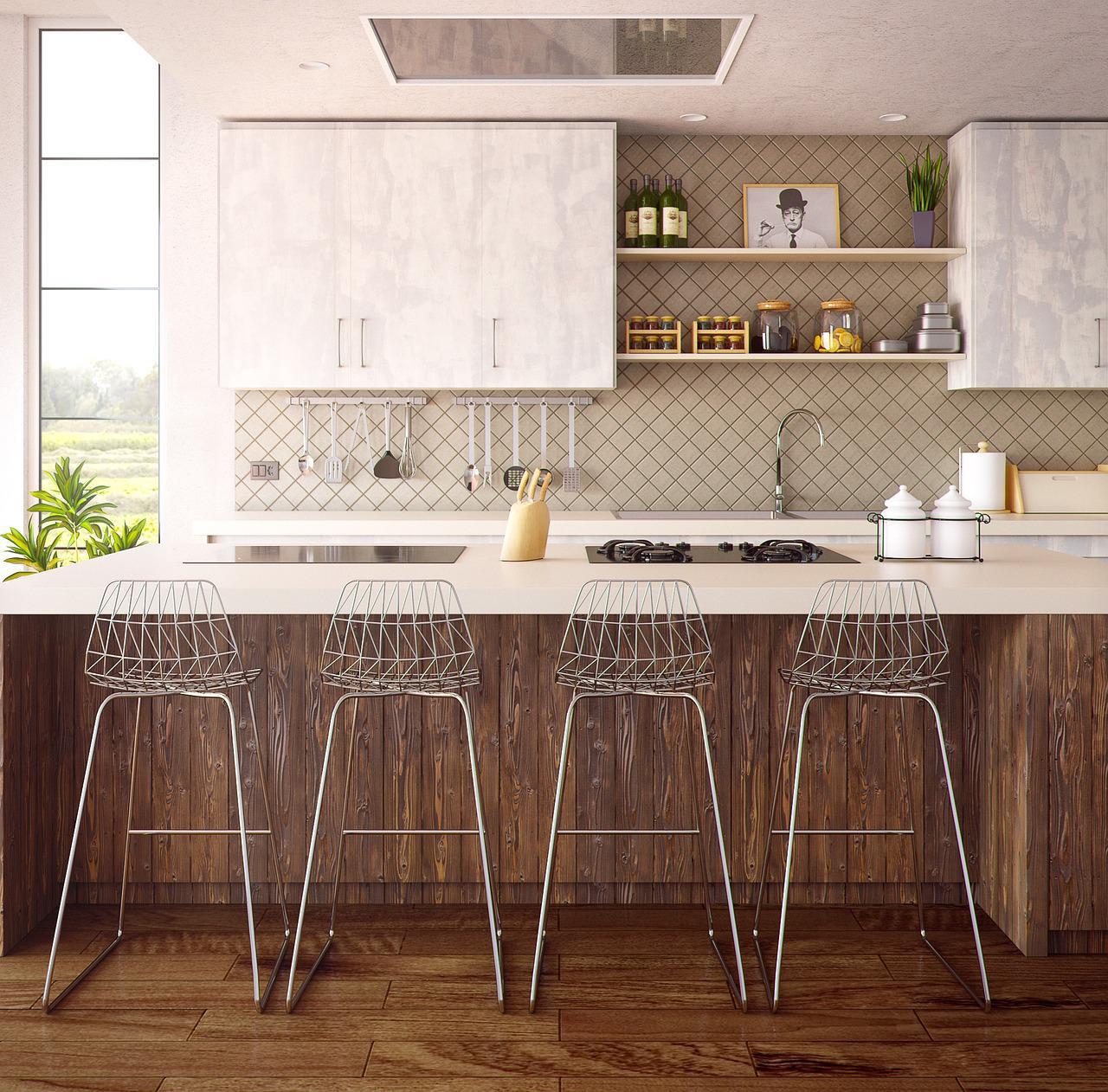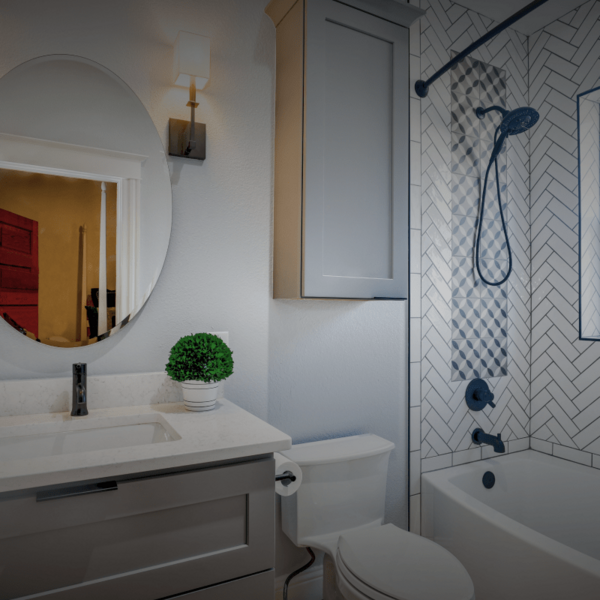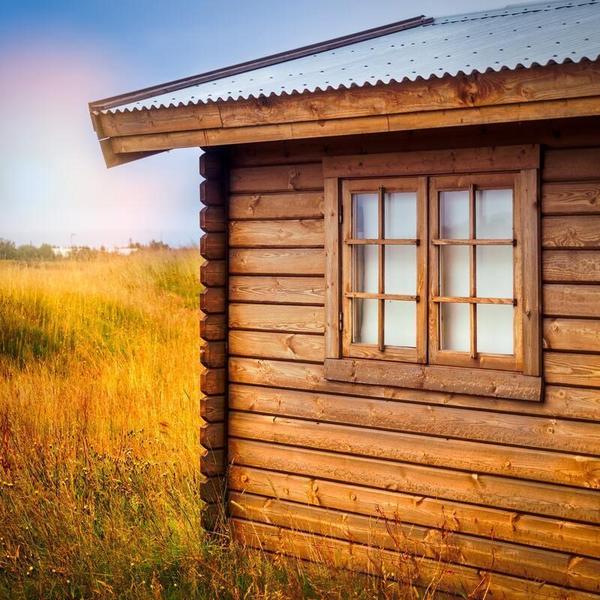For those of us who carry a deep passion for cooking, consider ourselves diehard foodies, can name fifteen different food blogs that we religiously follow, and lit a candle at the passing of Anthony Bourdain, the idea of downsizing to a Tiny House kitchen can be rather traumatic.
But I’m here to tell you that I’ve gone through that process and emerged on the other side, unscathed, to share that a fairly normal kitchen existence CAN happen in a Tiny House.
Granted, my personal experience comes from the parameters of living solo (and cooking for one, or sometimes two) in my Tiny Home. And in the design process I have allowed for a fairly generous percentage of my 20’ Tiny House to be occupied by kitchen space. The situation is likely to be different for a full family cooking to feed all of its members, but I believe that where there’s a will, there’s a way. A functional kitchen is a high priority for me personally, and well worth the use of the square footage. In this article I’ll share tips and ideas for how to make the most of your Tiny House kitchen and create a place to conveniently prepare your culinary masterpieces.
What Are the Main Issues for Tiny House Kitchens?

A limited amount of space to work with means precise use of every square inch of work surface and storage space opportunity. That said, I would caution against thinking that this means throwing out all but your favorite one or two kitchen gadgets.
Back when I was down-sizing in preparation to embark upon the Tiny Life, I thought I’d have to give up most of my kitchen gadgets and cooking tools. I carefully scrutinized each one. Many of them ended up in the donation, sell, and give-away piles. In the more than four years since then, replacements for most of those discarded items have eventually made their way back into my Tiny House kitchen scenario.
What Are the Essential Components of a Tiny House Kitchen?
Here’s a list of items to think about when planning a Tiny House kitchen. Not every item on the list will be important or necessary to every Tiny House dweller, but it’s a good general place to start brainstorming:
- Countertop-level workspace
- Cutting boards
- Sink
- Cooktop
- Oven or toaster oven
- Exhaust fan
- Refrigerator and freezer
- Non-perishable food storage
- Dining ware storage
- Dishwasher or dish drying rack
- Storage for cooking utensils
- Storage for pots and pans
- Storage for cleaning supplies- dish soap, kitchen towels, etc.
- Kitchen small appliances
- Mini bar? (come on, some of you were thinking about this one from the very start- how will you manage without your martini shaker, shot glass collection, and that bottle of Tanqueray?)
Countertop space.
I don’t do a lot of baking, so this isn’t as crucial for me as it might be for someone who does. But one tip I’ll throw out there is this: incorporating old-style pull-out cutting board surfaces can greatly increase the amount of horizontal workspace surface in your kitchen. Do pay attention to whether or not they will block drawers or doors to cabinets, refrigerator, or oven when fully extended. Or be willing to sacrifice the function of one while using the other. Using a ‘mise en place’ method of meal preparation can be very helpful, especially if all the ingredients and applicable tools are brought out to the work surfaces before beginning meal preparation. This will eliminate the need to be opening drawers and cabinet doors once the meal preparation is underway.
Cutting boards.

One option is to eliminate the need for cutting boards by incorporating butcher block countertops into the Tiny House kitchen. I find that clean-up is easier if I can pick up my portable cutting boards and rinse them in the sink. It’s also convenient to be able to carry the cutting board contents to the cooktop to be scraped into the pan. I find it useful to employ cutting boards that are heat resistant in order to increase the availability of places to set down hot pots and pans.
Dishwasher or dish drying rack.
In my opinion, there’s no need for a dishwasher in a Tiny House. Doing dishes is a simple task, even potentially therapeutic. And a dishwasher takes up too much valuable real estate in a Tiny kitchen. I keep a dish drying mat on the countertop next to my sink. But a more space-efficient idea would be a drying rack that fits directly over the sink itself, especially if it’s a two-basin sink. I chose a large single basin sink for reasons of flexibility. I use a removable tub that fits one half of the sink and effectively turns it into two basins when necessary. The tub is stored out of the way below the sink when not in use.
Oven.
If your cooking practices tend towards full Thanksgiving turkey meals and generous pot roasts, a full oven– even if it’s compact or apartment-sized– is essential. As a pescatarian who generally cooks for one or two people, these large meaty main entrees aren’t part of my repertoire, so a convection toaster oven does a perfectly adequate job of meeting my needs.
In fact, I often find myself browsing online for quick, easy, and healthy veggie recipes that are simple enough for one person to prepare and consume. With the popularity and convenience of online food delivery services, I can order the necessary fresh ingredients directly to my doorstep when needed. And it sits above counter height on its own wall shelf rather than taking up valuable countertop space or below-counter storage space.
Cooktop.

Many star chefs will claim that there’s no substitute for cooking over flame. Thankfully, a propane stovetop is an easy option in a Tiny House. Oftentimes, propane provisions will be in place in a Tiny House for an instant hot water tank already. And cooking with propane is more efficient than electricity from an off-grid standpoint. I highly recommend including an exhaust fan in your cooktop area. Cooking odors can easily and quickly permeate an entire Tiny House. And removing fumes from propane burning appliances while in use is important.
Mini Bar.
Tiny House living means not having an extensive wine cellar at your fingertips. But if cocktail hour is an important part of your lifestyle, by all means dedicate the necessary space for your essentials.
Small appliances.
I won’t quite say that ‘I can’t live without’ my refurbished citrus juicer… I mean, if some apocalyptic scenario separated me from it, I’d figure out a way to manage, but it wouldn’t be willingly. Back to that story of getting rid of, and then re-acquiring, most of my kitchen gadgets? Here’s a list of what’s currently included in my Tiny House kitchen space:
- electric kettle
- immersion blender
- citrus juicer
- food processor
- food dehydrator
- spice grinder
(There’s one more biggie, but I’ll leave that for the How To Save Space with Useful Gadgets section below)
My current collection of non-electric gadgets includes:
- citrus reamer
- French rolling pin
- various colanders and strainers
- corkscrew/bottle opener
- a crock full of typical kitchen utensils such as spatulas and whisks
- teapot
- measuring cups and spoons
- flour sifter
- mortar and pestle
- funnels
- garlic press
- can opener
- vegetable peeler
- Microplane grater and zester
- hand-crank beaters
- spirulizer
- a set of knives
- and yes, a martini shaker
I don’t have a stand mixer, or even an electric hand mixer anymore. Because my need for this type of tool is rare, I resort to old-school elbow grease to get the job done if it’s something the food processor can’t handle. I’m also not a coffee drinker, so no coffee maker. But I do have an entire shelf dedicated to tea and tea making supplies (that’s only getting worse since I’ve started spending more of my time in the UK). Oh, and I have a personal hatred for microwaves, so you’ll never see one in my Tiny House.
Tiny House Kitchen Storage Methods

Think vertically as well as horizontally when planning or equipping a Tiny House kitchen. Shallow shelves lining the kitchen walls can greatly increase your kitchen’s storage capacity and are a great way to keep items conveniently at hand. Limit the depth of the shelves to accommodate one item deep so that things don’t get buried behind and out of sight. Having to take one thing down to reach another isn’t an efficient solution.
Some items are more suited to drawers, some to open shelves, and some to cabinets. Part of this equation is how dusty the environment and whether the given items to be stored should be kept behind closed doors. Another consideration is sun exposure. I keep herbs and spices in dark-colored glass jars and enclosed behind a pantry cupboard door.
How To Save Space with Useful Gadgets

Image credit: instantpot
I’m tempted to call this section ‘Why I Love My Instant Pot.’ Seriously. I was a late-comer to this recently trendy gadget, having acquired one only a few months ago. When I unboxed it and set it on my countertop, where it took up about a quarter of my available counter space (I got the six-quart model), I shook my head and thought, “No way is this thing going to earn its keep.” But it has, and it does. The thing is, since it’s able to do the work of a slow cooker, a rice cooker, a steamer, and a pressure cooker, I was able to get rid of a number of these former gadgets to gain some extra space. And of course, it saves a mountain of time as well.
What Are Some Added Benefits of a Tiny Kitchen?
The Magic Triangle

The limited size of a Tiny House kitchen has an upside as well. In kitchen design, there’s the concept of the ‘magic triangle.’ To create the work triangle, lines are drawn on the floor plan between the sink, the refrigerator, and the cooktop. The concept is that, to maximize efficiency, no leg of the triangle should be more than nine feet long. That’s highly unlikely to happen in a Tiny House kitchen. Granted, the magic triangle principle argues for a minimum distance for these elements too, but my experience says that this isn’t as important. I love that I can stand in the center of my kitchen and turn three hundred and sixty degrees on the spot, and be almost within reach (or within an extra step or two) of everything. It’s very efficient to cook there.
Turn Up the Volume
I don’t know about you, but I love to turn up the music while I’m in the kitchen. One other bonus to cooking in a Tiny House is that you can turn up the tunes no matter where your Tiny House stereo or docking station is located and be able to move to the beat while whipping up your favorite concoctions.
Conclusion
What to include in a Tiny House kitchen is a highly personal decision. For someone who dines out for most meals, habitually grabs takeout on the way home, or is happy to microwave frozen meals, it doesn’t make sense to dedicate much square footage to the kitchen. But for those of us who find joy and satisfaction in creating a good home-cooked meal, my aim here has been to show that it’s possible to include almost everything but—or rather, including—the kitchen sink in a Tiny House kitchen. Yes, there will be times (daily?) when I would love to have one or two more linear feet of countertop space, but at the end of the day, what I have is perfectly adequate. And I must say that I enjoy cooking in my Tiny kitchen more than I have in any standard size kitchen I’ve used.



